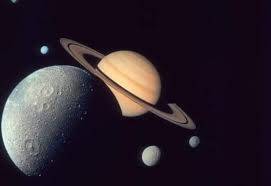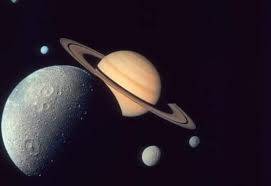The small, barely visible moon presents as a white sphere with a diameter of 250 kilometers and a surface that appears scarred. Saturn's icy moon "Enceladus" contains an ocean increasingly deemed "potentially hospitable to life," according to biophysics scientists who assert they have discovered new key elements indicating the possibility of such life forms on the moon. This small moon, invisible to the naked eye and with a scarred surface, orbits Saturn, the sixth planet from the Sun. The Cassini spacecraft, which flew by the moon multiple times during its mission to Saturn from 2004 to 2017, confirmed the existence of a vast saltwater ocean beneath a thick layer of ice and discovered plumes of water vapor escaping from cracks in this icy surface. During its passage through these columns, the spacecraft detected the presence of salt, organic elements, methane, and carbon dioxide. The analysis of data recorded by the probe continued long after the mission ended, similar to the announcement last summer regarding the detection of phosphorus, another essential element for life.
However, the element identified by a team from Harvard University this time, in addition to acetylene, propylene, and ethane, was hydrogen cyanide. American biophysicist and lead author of the study, Jonah Peter, stated, "It is a key element in the formation of more complex molecules, like amino acids or sugars that are crucial for the potential emergence of life." Athena Kostiuk, an astrophysicist and planetary scientist at the Paris-Mudon PSL Observatory who did not participate in the study, emphasized the importance of this new finding, as this molecule forms "a component of more complex organic chemistry when discussing habitability conditions."
However, the likelihood that the moon is "habitable" is not related to human life, as the average surface temperature is -200 degrees Celsius. The temperature may be significantly higher in the depths of the ocean, which scientists speculate contains hydrothermal vent openings. These types of chimneys could allow the escape of burning gases from beneath the moon, similar to those observed in the "lost city," a deep area in the Atlantic Ocean featuring vents that provide the energy required for chemical reactions. The discovery of hydrogen in Enceladus' plumes, announced in 2017, provided evidence of hydrothermal activity. Peter noted, "It is highly likely that the sample collected by the Cassini spacecraft originated from the ocean beneath Enceladus' surface."
The new element discovered by the Harvard team increases interest in Saturn's small moon. Kostiuk remarked that it "gathers nearly all the conditions that allow it to be habitable: liquid, energy sources, and nutrients – the essential elements for organic chemistry – in addition to a stable environment." Similar to Titan, another of Saturn's moons, and Jupiter's moons, Europa and Ganymede.
To verify this data, additional observational data is needed. The European Space Agency’s "JUICE" mission, launched last April, will focus on Ganymede. In the coming year, NASA's "Europa Clipper" mission will target the moon Europa.




